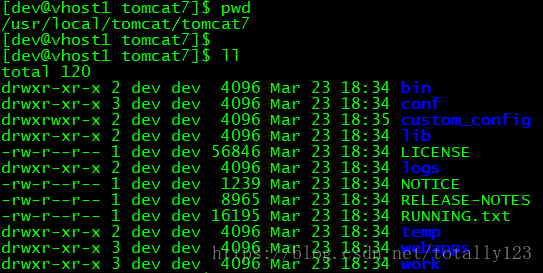1、背景:Spring配置文件需要通过context:property-placeholder标签或者PropertyPlaceholderConfigurer类来引入classpath路径下的properties文件,示例如下:
<context:property-placeholder location="classpath:jdbc.properties" /><bean class="org.springframework.beans.factory.config.PropertyPlaceholderConfigurer">
<property name="locations" value="classpath:jdbc.properties"/>
</bean>但像数据库配置这种随环境变化的文件我们并不想打到war中,而是希望引入war包外的文件。
2、方案:context:property-placeholder标签的location属性还提供了file:、http:和ftp:三种前缀,分别通过文件路径、HTTP资源和FTP资源引入文件,详见Spring官方文档。同时Spring支持#{systemProperties['config.location']}EL表达式,来引入自定义的系统变量config.location,详见Spring官方文档。
3、示例:我的数据库配置放到了Tomcat工作目录的自定义目录custom_config下,名为jdbc.properties,通过自定义Listener将custom_config的绝对路径写到系统变量中,然后在Spring配置文件通过file:前缀和#{systemProperties['config.location']}来找到jdbc.properties。

public class ConfigLocationListener implements ServletContextListener {
private static Logger log = LoggerFactory.getLogger(ConfigLocationListener.class);
@Override
public void contextInitialized(ServletContextEvent arg0) {
log.info("init begin");
// 设置配置文件路径
String configFilePath = System.getProperty("catalina.home") + "/custom_config/";
// 设置配置文件路径的系统变量
System.setProperty("config.location", configFilePath);
log.info("init end");
}
@Override
public void contextDestroyed(ServletContextEvent arg0) {
log.info("destroy begin");
log.info("destroy end");
}
}
<beans xmlns="http://www.springframework.org/schema/beans"
xmlns:xsi="http://www.w3.org/2001/XMLSchema-instance"
xmlns:context="http://www.springframework.org/schema/context"
xsi:schemaLocation="http://www.springframework.org/schema/beans
http://www.springframework.org/schema/beans/spring-beans-4.3.xsd
http://www.springframework.org/schema/context
http://www.springframework.org/schema/context/spring-context-4.3.xsd">
<context:property-placeholder location="file:#{systemProperties['config.location']}jdbc.properties" />
... ...
</beans>






 本文介绍了如何在Spring中引入外部properties文件,特别是在环境变化时避免将配置打包进war。文章探讨了使用`<context:property-placeholder>`标签的`location`属性结合`file:`, `http:`, `ftp:`前缀以及利用Spring的EL表达式引用系统变量的方法,通过实例展示了如何从Tomcat工作目录的特定路径加载数据库配置文件。"
127369348,5691934,Android:检测字符串是否含字母数字,"['Android开发', '数据结构', '字符串处理']
本文介绍了如何在Spring中引入外部properties文件,特别是在环境变化时避免将配置打包进war。文章探讨了使用`<context:property-placeholder>`标签的`location`属性结合`file:`, `http:`, `ftp:`前缀以及利用Spring的EL表达式引用系统变量的方法,通过实例展示了如何从Tomcat工作目录的特定路径加载数据库配置文件。"
127369348,5691934,Android:检测字符串是否含字母数字,"['Android开发', '数据结构', '字符串处理']

















 被折叠的 条评论
为什么被折叠?
被折叠的 条评论
为什么被折叠?








